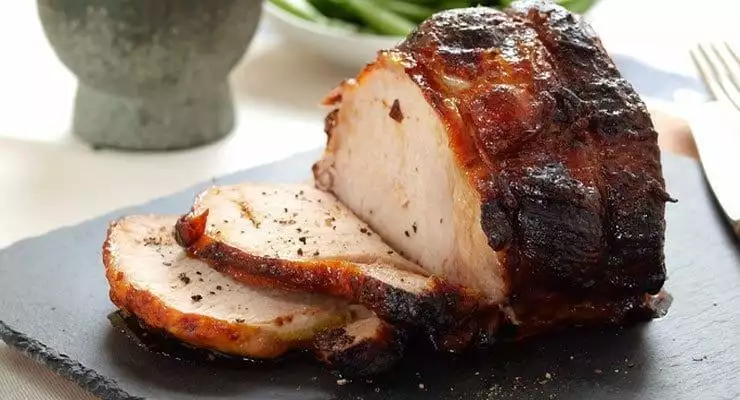Baking Your Pork Roast
Pork is known for “shrinkage.” Baking pork roast causes it to give up its juices quickly which causes shrinkage. As pork begins to shrink and lose its juices, it becomes quite dry.
Fortunately, there are several tips to baking your pork roast so shrinkage and dryness are reduced. The first way is to cover the pork roast with aluminum foil or your baking pan cover.
Depending on your oven temperature, covering pork roast helps preserve its juicy flavors and also reduces shrinkage. The downside to covering a pork roast is that it won’t have a lovely browned outer layer of meat until it is uncovered.
Cover or Seal in Pork Roast with a Spicy Rub
There are other ways to bake a pork roast that also preserve flavor and avoid drying. Bake the pork roast with a spicy rub of your favorite spices like peppercorns, chili powder, sea salt, sage, thyme and dried garlic.
To avoid spicy rubs drying out too quickly, cover the pork roast for about a half hour, depending on the size of the meat. Generally, rubs can be applied to a five pound pork roast and covered for 30 to 40 minutes. Remove the cover and allow the meat to finish baking to doneness.
Tips on Adding Liquid to Pork Roast
The goal is to keep as much of the juices in the pork roast as possible. When juices begin to seep into the baking pan, add water, white wine, brandy, rum or vegetable broth to these juices. This forms the basis of the liquid used to baste your pork roast and keep it from drying. Later, use this liquid to create delicious, flavorful pork gravy.
Other Ways to Cover Pork Roasts
In addition to a spicy rub, there are other methods to cover a pork roast when baking. Try covering the outer layer of the meat with fruits like peach halves or apple, lemon, orange and pineapple slices.
Layering fruit atop your pork roast helps add subtle flavor to the meat as it bakes. When fruit layers lose their juices, add a little orange, lemon or lime juice to the baking pan and baste the pork roast with this liquor.
A Flavorful Pork Roast for Winter Menus
Pork roasts are wonderful to add to winter menus. To make your pork roast a true winter entree, combine finely chopped walnuts, dates and figs with your favorite spices and chopped herbs. Layer this atop the pork roast before baking. This is a surprisingly great way to keep your pork roast from losing its juices and reduce shrinkage. The best part of using a winter cover for your pork roast is the unique sweet, nutty flavor it adds to the meat.
Pork Roast – Haute Cuisine Style
In many fine restaurants, a pork roast may be baked in two types of covers: rock salt or buttery dough. A rock salt covering seals in juices as the meat bakes.
To try dough coverings at home, you need Chou paste crust. To ensure the meat is properly cooked, brown the pork roast first in a large pan on all sides on the stove top. Remove and cool to room temperature.
While the meat is cooling, blend butter, milk and water in a small pan on medium heat and stir until it forms a ball. Place this on lightly floured waxed or parchment paper and roll out to the full size of your pork roast.
Flour your rolling pin often. Chou past dough is sticky. Place your pork roast downside up in the center of the dough and fold over the edges of the dough so that the roast if fully covered. Bake, seam side down in a slow oven until the pork roast gives up a small amount of liquid. Reserve this liquid to make a light wine vinegar sauce to serve with the pork roast.
Need more? Here is a great BBQ Pork Roast recipe from the BBQ Pit Boys:






